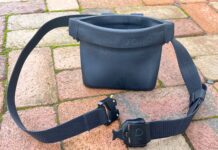I’m a huge fan of the Tour de France. I install cable every July just so I can spend every early morning for almost a month watching dramatic racing as well as absolutely stunning aerial views of France (and sometimes the neighboring countries that the race visits).
But there is one sad certainty of every Tour: At some point, a leashless dog runs across the road, right in front of the racers.
Sometimes the dog gets hit, but more often, it’s the bicycle racers themselves that take the brunt of the accident as they swerve and hit the brakes. They fly through the air at high speed, hitting the pavement with gruesome injuries. Almost always, the dog walks away in one (although bruised) piece. The real victims are the hopes and dreams and a year of training for the riders who are injured badly enough to have to quit the race.
This year’s first canine-caused accident happened on the first stage of the Tour. At kilometer 55 (of 223 total kilometers, or more than 138 miles), a dog that appeared to be a small Golden Retriever ran out into the road just in front of the peloton, or main group of riders, who were traveling at about 23 miles an hour. Boom! Riders went down, shaken, bruised, and scraped. The announcers said later that the dog was okay.
This year’s first Tour/dog incident made me wonder: Why do people bring dogs to crowded, hot, loud, stress-packed places? And why don’t people leash their dogs in such a place?
It also makes me want to remind people of the importance of teaching their dogs an emergency recall – and practicing it frequently, keeping their dog’s response fresh and sharp. In almost every Tour de France dog crash I’ve ever seen (in seven years of fandom), the camera catches sight of the dog about three seconds before the cyclists come into contact – and the dog is invariably wearing the international posture and expression of “Uh oh, I’m in trouble with my owner.” At this point, you know that the owner just noticed the dog on the road, has bellowed the dog’s name, and maybe even made one final dog-handling error: he or she is dashing toward to the dog in an effort to grab it. When a dog looks like this (lowered ears, head, and body; tail tucked), it doesn’t matter if he’s running away from his owner, apprehensive about a potential imminent punishment, or is slinking fearfully toward his owner; the fact is, he’s not doing the one thing that could save him from getting hit by a speeding cyclist: running keenly and speedily toward his owner and off the road. Short of a leash (duh), only a well-honed emergency recall can prevent canine and cyclist carnage.
For more in building a better recall, see the following Whole Dog Journal articles:
“Teaching a Reliable Recall,” December 2008
“Teach Your Dog to Run Off-Leash,” July 2007
“Training Your Dog to Come When Called,” December 2005
“Building Off-Leash Reliability,” March 2002





